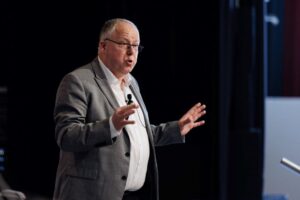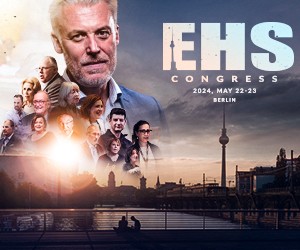EHS Congress
“We need to be creative” SHP speaks to Malcolm Staves and Dr Leandro Herrero
For this year’s EHS Congress taking place between 22-24 May, we spoke to Malcolm Staves, Global Vice President of Health and Safety at L’Oréal on attracting the next generation into health and safety, and Dr Leandro Herrero, Chief Organizational Architect at The Chalfont Project on peer-to-peer culture, ahead of their talks at the event.
Hi Malcolm, you’ll be leading a workshop alongside your colleague Thiago Ramos, this year. Could you tell us what it will cover?

Malcolm Staves
Malcolm Staves (MS): Yes we will look at attracting and retaining the next generation of EHS professionals and leaders. This is a hot topic that many professions are challenged with.
Traditional recruitment with the traditional benefits need to re-thought and adjusted to meet the needs of the future workforce. This future is not too far away as it is expected approximately 40% of the workforce will be generation Z.
We need to be creative and adapt to a population that are digitally savvy, sensitive to the environment and its protection and to work-life balance.
We are hoping for a participative workshop where the collective intelligence of the people present in the workshop will help others navigate this subject. As an output we will produce a thought leadership paper based on these workshops as a thank you.
Why does the profession need to focus on recruitment and attracting talent?
MS: I think this is very obvious – There is a talent war happening at the moment so we need to be seen as more attractive to new hires but in addition we need to be able to retain the professionals once hired.
Consequently, we need to adapt our processes and methods so new hires want to stay in L’Oréal. I believe that to achieve this we need to understand their values, expectations and needs. If 40%+ of our near future workforce will be generation Z it make sense that our profession be as diverse as the people we are honoured to protect. We need young and old talent
Regarding young talent I have three generation Z sons and we have university students in our team each year so I think I may have a little experience to share in this area.
 What does L’Oréal do to attract young talent in H&S?
What does L’Oréal do to attract young talent in H&S?
MS: Now this is the million dollar question that you will have to attend the session to get the answers!
Got it! And what are you most looking forward to at EHS Congress this year?
MS: The networking. I am a great believer of the Power of Networking and the EHS Congress is one of the best conferences in Europe to not only meet and network with old friends but also meet new ones.
I have met some really good contacts through this Congress over the years and the knowledge they have shared with me has helped health & safety within L’Oréal.
And Dr. Herrero, your presentation will look at peer-to-peer focused-culture. Do you think peer-driven culture holds more power than leadership-led culture change? If so, why?

Dr Leandro Herrero.
Dr. Leandro Herrero (LH): The strongest source of power inside the organisation, which is not hierarchical is peer-to-peer. The ‘people like me effect’ is at the core of the social copying that is always going on inside the organisation mostly in an unconscious way.
I personally conducted studies a long time ago showing that peer-to-peer is roughly twice as powerful as the hierarchical when it comes to shaping cultures. Leadership needs to understand this by supporting it and creating conditions and psychological spaces.
Is there a level of trust needed for peer culture change? For example, could there be negative peer influence?
LH: Influence can be both. It’s important to orchestrate small pockets/critical masses of committed employees to a positive culture. The ‘group effect’, the copying and mirroring of this at peer-to-peer level, will deal with negativity.
You can deal with negativity on an individual basis, one by one. When negativity of some sort becomes semi-epidemic, the only solution is a counter-epidemic of the alternative. That can be created.
What’s one key change (positive or negative) you’ve seen in organisational culture post-Covid?
LH: Culture has only been on the table. Sometimes with more visibility than others. There are plenty of anecdotes of changes post-covid but there is a lot of confirmation bias: we all want to declare something Covid-related that has changed. A couple of years from now, another conversation will have taken over.
To find out more about EHS Congress 2024, click here.
“We need to be creative” SHP speaks to Malcolm Staves and Dr Leandro Herrero
SHP meets 2024's EHS Congress speakers to discuss attracting the next generation into health and safety, and peer-to-peer culture change.
Safety & Health Practitioner
SHP - Health and Safety News, Legislation, PPE, CPD and Resources Related Topics
“We can boost our positive impact in the organisational system”: SHP speaks to Juliana Bley
Heathrow Airport’s Roly Latif – “Shift focus to more things going right”
Higher demand but not able to meet it – survey finds health and safety provision lacking for staff


 What does L’Oréal do to attract young talent in H&S?
What does L’Oréal do to attract young talent in H&S? 
Couldn’t agree more. I like the reply of the talent war.